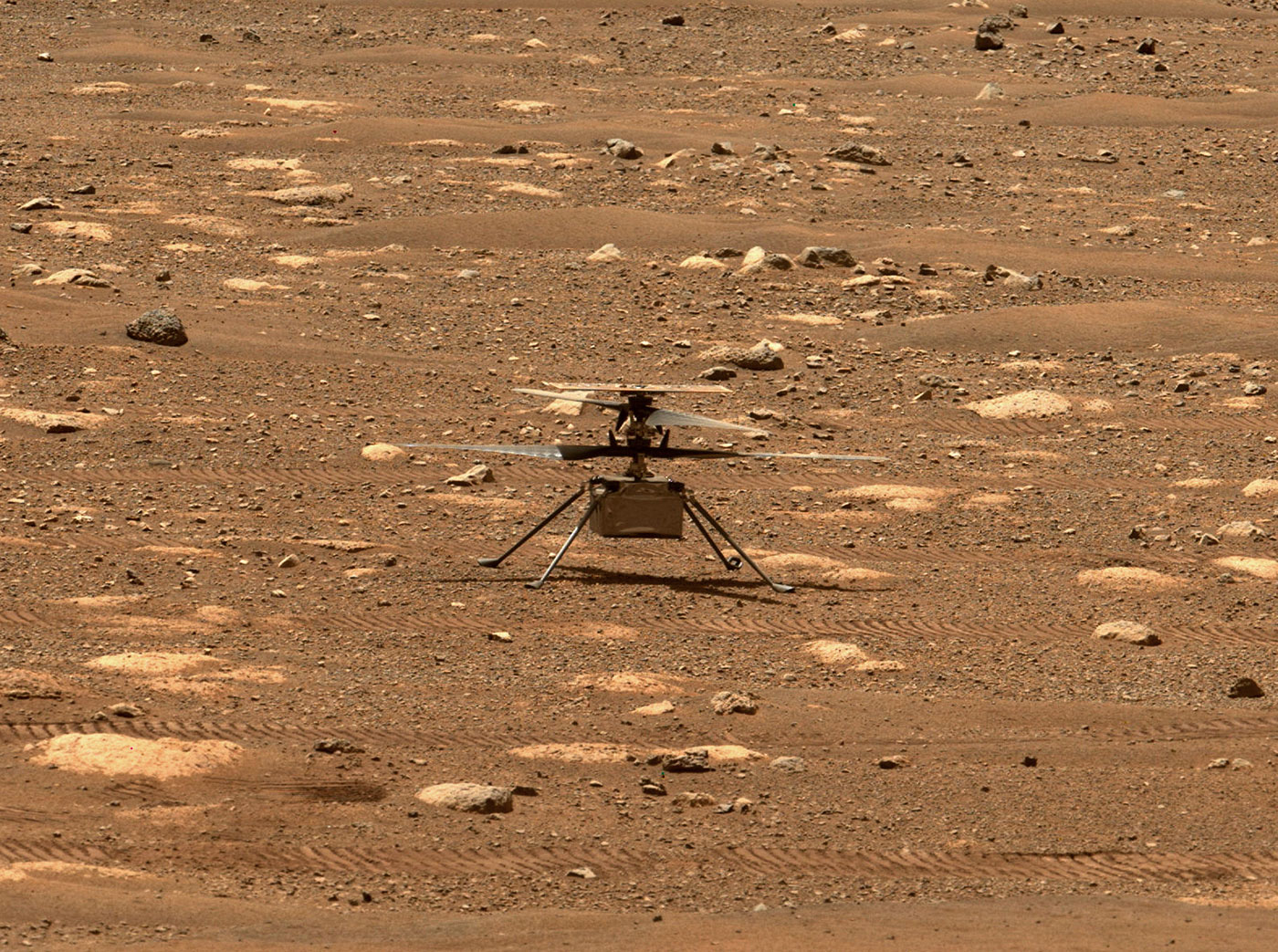
For SpaceUpClose.com & RocketSTEM
CAPE CANAVERAL, FL – NASA’s Mars Chopper Ingenuity has unlocked its rotor blades and briefly spun them up during a successful slow speed test on April 7. However, a higher speed test on Friday, April 9, ended prematurely and the team is looking into the cause and analyzing why and has therefore postponed the 1st flight test a few more days.
Therefore, NASA announced that the history making attempt at humanity’s first, controlled test flight of an aircraft on another world has been delayed to NET Wednesday April 14 while the helicopter team carefully scrutinizes the all data and determines a new way forward.
“#MarsHelicopter 1st flight attempt delayed to no earlier than April 14 During the high-speed spin test, the sequence ended early during the transition from “preflight” to “flight” mode. The helicopter is safe & healthy. The team is diagnosing the issue,” NASA’s Jet Propulsion Laboratory (JPL) tweeted.
JPL built and manages the Ingenuity and Perseverance missions for NASA.
Note; story being updated
#MarsHelicopter 1st flight attempt delayed to no earlier than April 14
During the high-speed spin test, the sequence ended early during the transition from "preflight" to "flight" mode. The helicopter is safe & healthy. The team is diagnosing the issue. https://t.co/ysnZzKR7qM pic.twitter.com/lP3NrIvGBs
— NASA JPL (@NASAJPL) April 10, 2021
If all proceeds as planned, the 4-pound (1.8-kg) rotorcraft is expected to take off from Mars’ Jezero Crater Wednesday, April 14, at 12:30 p.m. local Mars solar time (10:54 p.m. EDT, 7:54 p.m. PDT), hovering 10 feet (3 meters) above the surface for up to 30 seconds to 40 seconds, the team said at a media briefing April 9.
“While Ingenuity carries no science instruments, the little helicopter is already making its presence felt across the world, as future leaders follow its progress toward an unprecedented first flight,” said Thomas Zurbuchen, associate administrator for science at NASA Headquarters, at the media briefing.
“We do tech demos like this to push the envelope of our experience and provide something on which the next missions and the next generation can build. Just as Ingenuity was inspired by the Wright brothers, future explorers will take off using both the data and inspiration from this mission.”
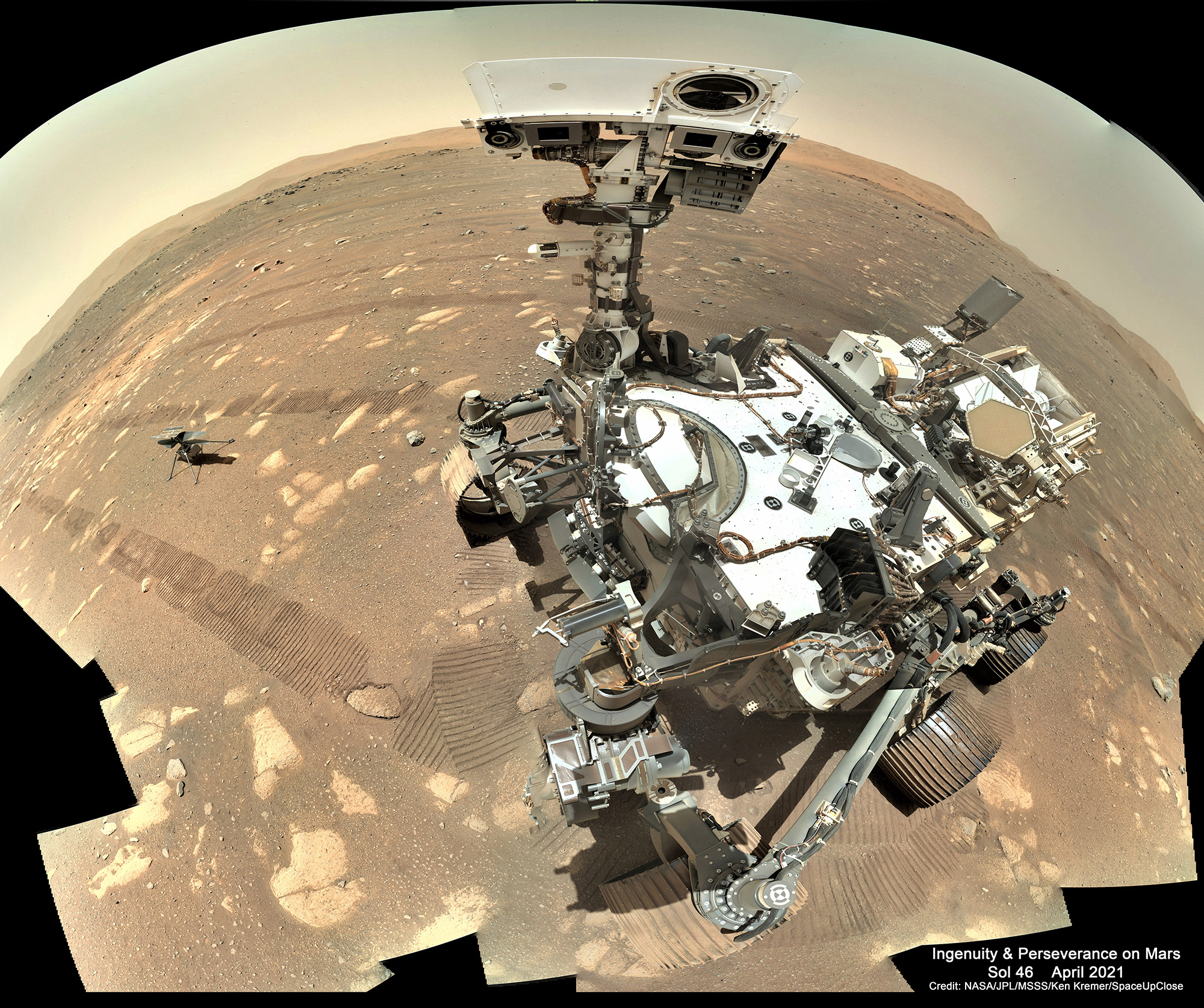
“The Mars Helicopter is a high-risk, high-reward technology demonstration,” said MiMi Aung, Ingenuity project manager at JPL.
“From day one of this project our team has had to overcome a wide array of seemingly insurmountable technical challenges,” said MiMi Aung, JPL Ingenuity project manager at the briefing.
“And here we are – safely on Mars – on the eve of our first flight attempt. We got this far with a never-say-die attitude, a lot of friends from many different technical disciplines, and an agency that likes to turn far-out ideas into reality.”
Until the delay to NET April 14, the NASA JPL team had planned the maiden test flight to take place on Sunday, April 11.
“The #MarsHelicopter is set to make history: the first attempt at powered flight on another planet. The craft is expected to take off April 11, with data coming to Earth overnight April 12. If successful, it’ll hover ~10 ft (3 meters) for up to 30 seconds,” NASA JPL tweeted.
The #MarsHelicopter is set to make history: the first attempt at powered flight on another planet. The craft is expected to take off April 11, with data coming to Earth overnight April 12. If successful, it'll hover ~10 ft (3 meters) for up to 30 seconds. https://t.co/71lPIqyoOk pic.twitter.com/GCYuCViS1f
— NASA JPL (@NASAJPL) April 9, 2021
The goal is to conduct a history making ‘Wright Brothers’ first flight moment with the agencies experimental craft on Mars no earlier than April 14 – aiming to make the first attempt at powered, controlled flight of an aircraft on another planet.
Data and imagery will be received back on Earth the next day, April 15.
And Ginny has to do all that in the ultra-thin Martian atmosphere less than 1% as dense as Earth’s.
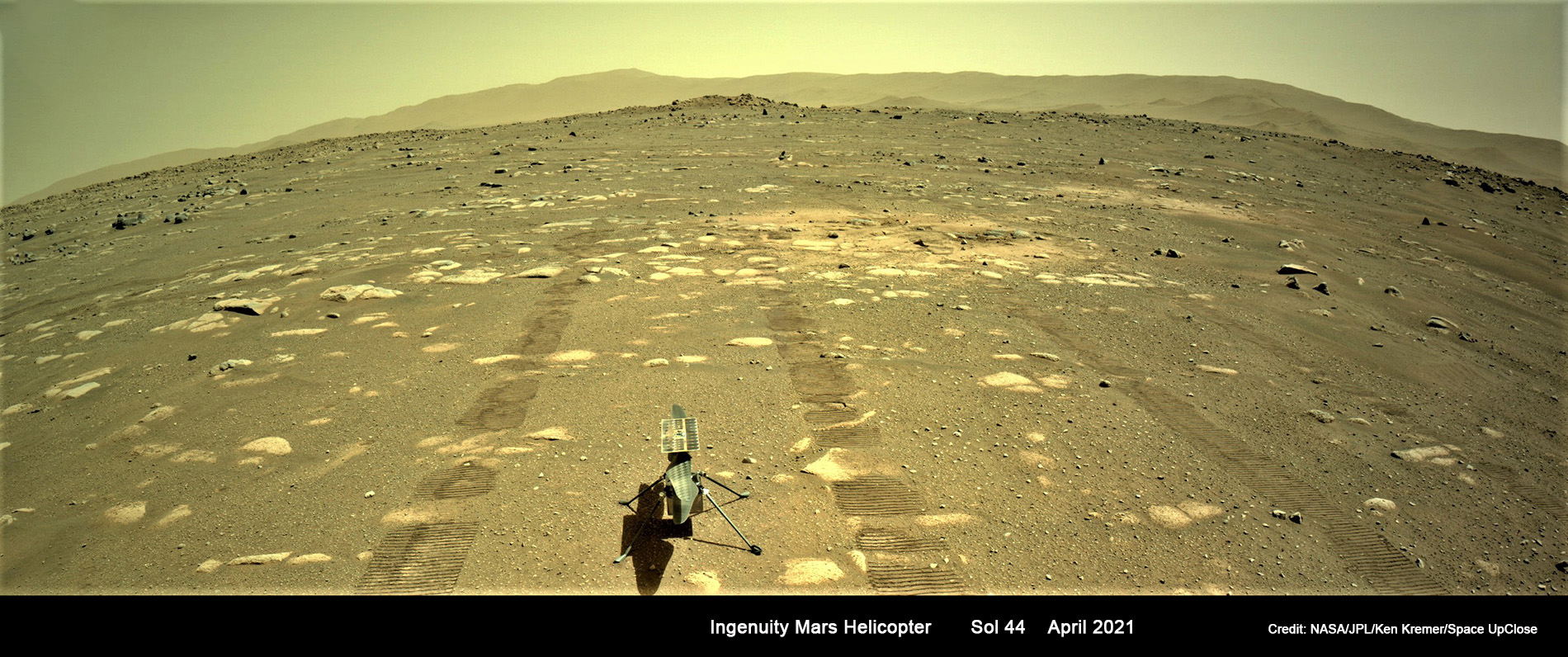
With the new delay the team is working to ensure success for the upcoming test flight campaign
Here’s the full NASA JPL statement:
“Based on data from the Ingenuity Mars helicopter that arrived late Friday night, NASA has chosen to reschedule the Ingenuity Mars Helicopter’s first experimental flight to no earlier than April 14.
During a high-speed spin test of the rotors on Friday, the command sequence controlling the test ended early due to a “watchdog” timer expiration. This occurred as it was trying to transition the flight computer from ‘Pre-Flight’ to ‘Flight’ mode. The helicopter is safe and healthy and communicated its full telemetry set to Earth.
The watchdog timer oversees the command sequence and alerts the system to any potential issues. It helps the system stay safe by not proceeding if an issue is observed and worked as planned.
The helicopter team is reviewing telemetry to diagnose and understand the issue. Following that, they will reschedule the full-speed test.”
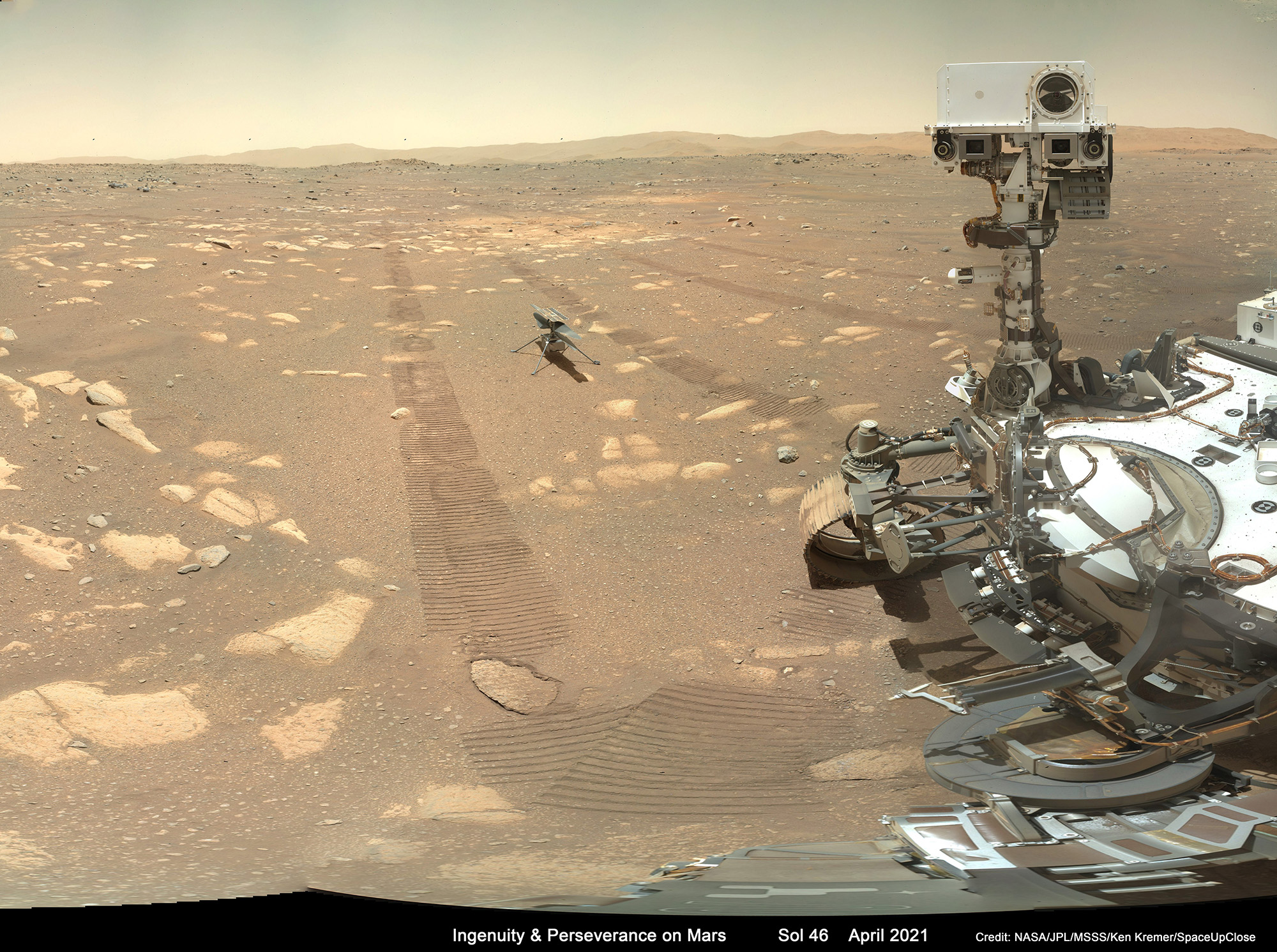
To get to this point of preparing for flight NASA’s experimental solar powered Ingenuity Mars Helicopter has safely survived its first several frigid Martian nights standing alone and all on its own power overnight on Monday, April 5, Sol 44, after being safely deployed to the ‘Martian Flight Field’ on Sunday, April 4, and carefully dropped from the attach point on the belly of the Perseverance rover where its been hanging this past week after completing the methodical step by step unfolding, swing down and deployment of all four graphite composite landing legs.
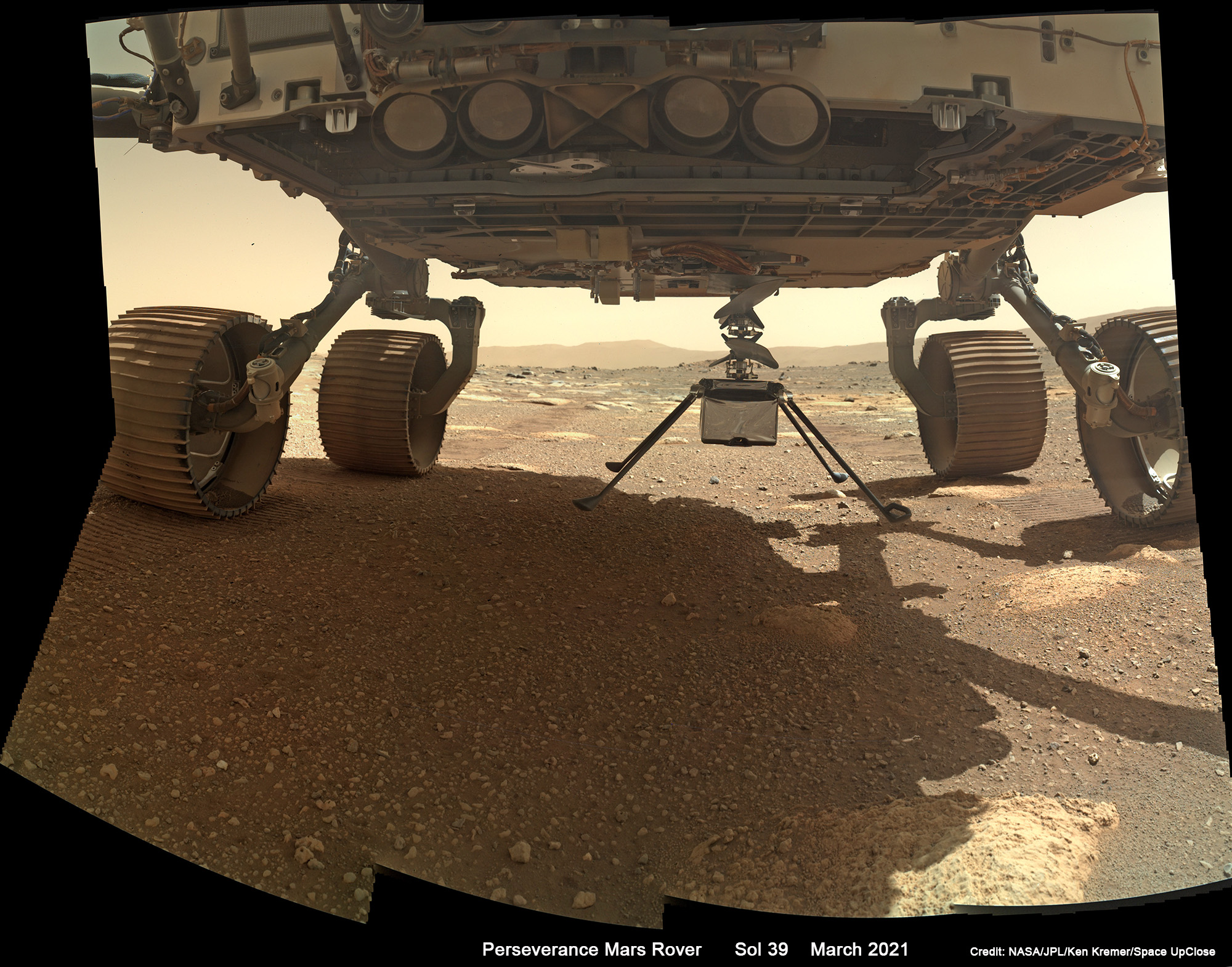
After the surface drop deployment NASA’s Perseverance rover then snapped her first ever selfie on Mars this week on April 6, or Sol 46 – as well as its also being the first joint selfie with the experimental Ingenuity Mars helicopter on the Red Planet – – and its truly spectacular !!
Ginny and Percy (nicknames for Ingenuity and Perseverance) are seen together in new mosaics here about 13 feet (4 meters) apart in imagery taken on April 6, 2021, the 46th Martian day, or sol, of the mission – ahead of humanity’s history making first controlled test flight by an aircraft beyond Earth now just days away and targeted for Sunday, April 11.
Enjoy my two versions herein of the Sol 46 double selfie view from my stitches of several dozen raw images taken by the high resolution WATSON camera located at the end of the rover’s robotic arm, showing wide angle rounded fisheye and flat scenes of NASA’s $80 million rotorcraft and the $2.7 Billion SUV sized rover.
With Ingenuity now deployed on Mars’ surface its six lithium ion batteries will be charged solely by the helicopter’s own solar panel.
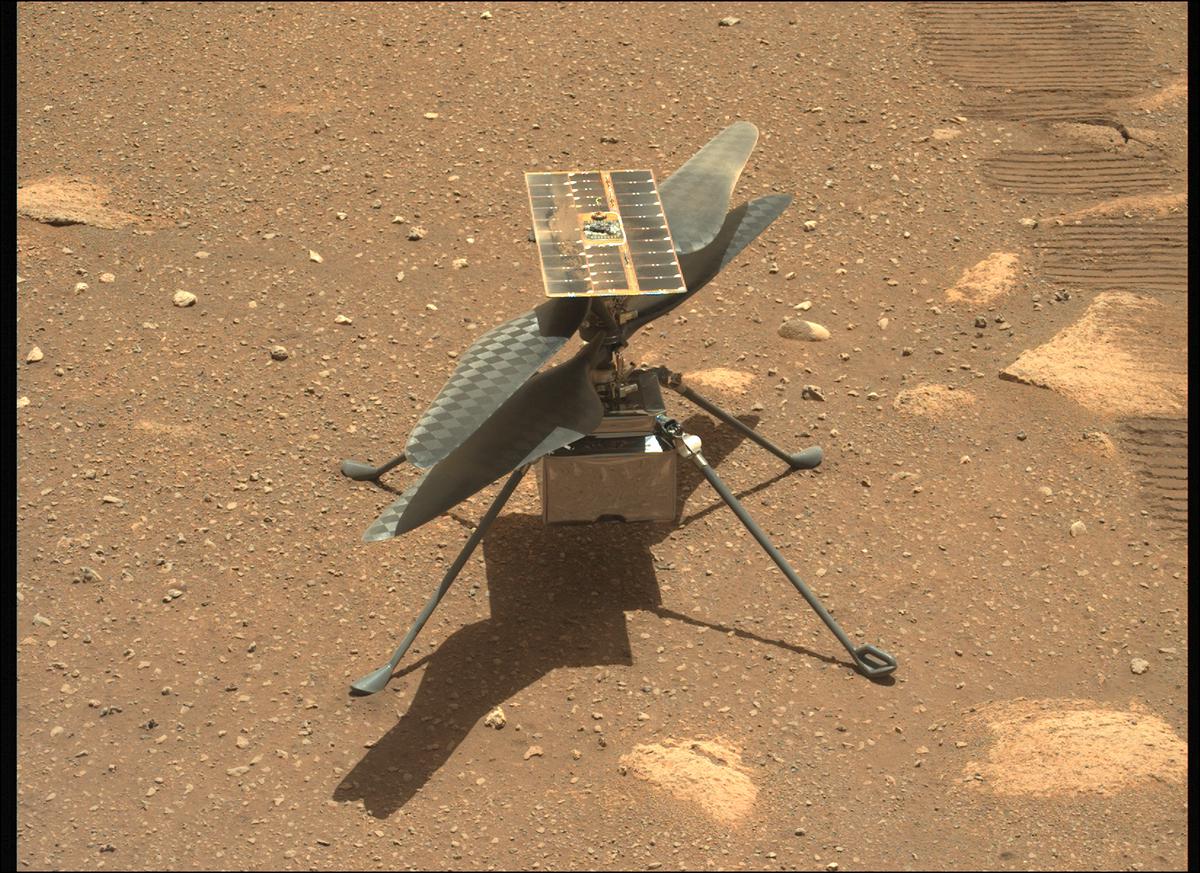
If Ingenuity were to encounter difficulties during its 30-sol (Martian day) mission, it would not impact the science gathering of NASA’s Perseverance Mars rover mission.

My commentary about the search for life on Mars and the deployment of the Ingenuity Helicopter was featured in a live interviews on April 9 and March 30 on News Nation Cable TV News Network on ‘The Donlon Report’ illustrated with my Mars mosaics
https://twitter.com/TheDonlonReport/status/1380936805470642178
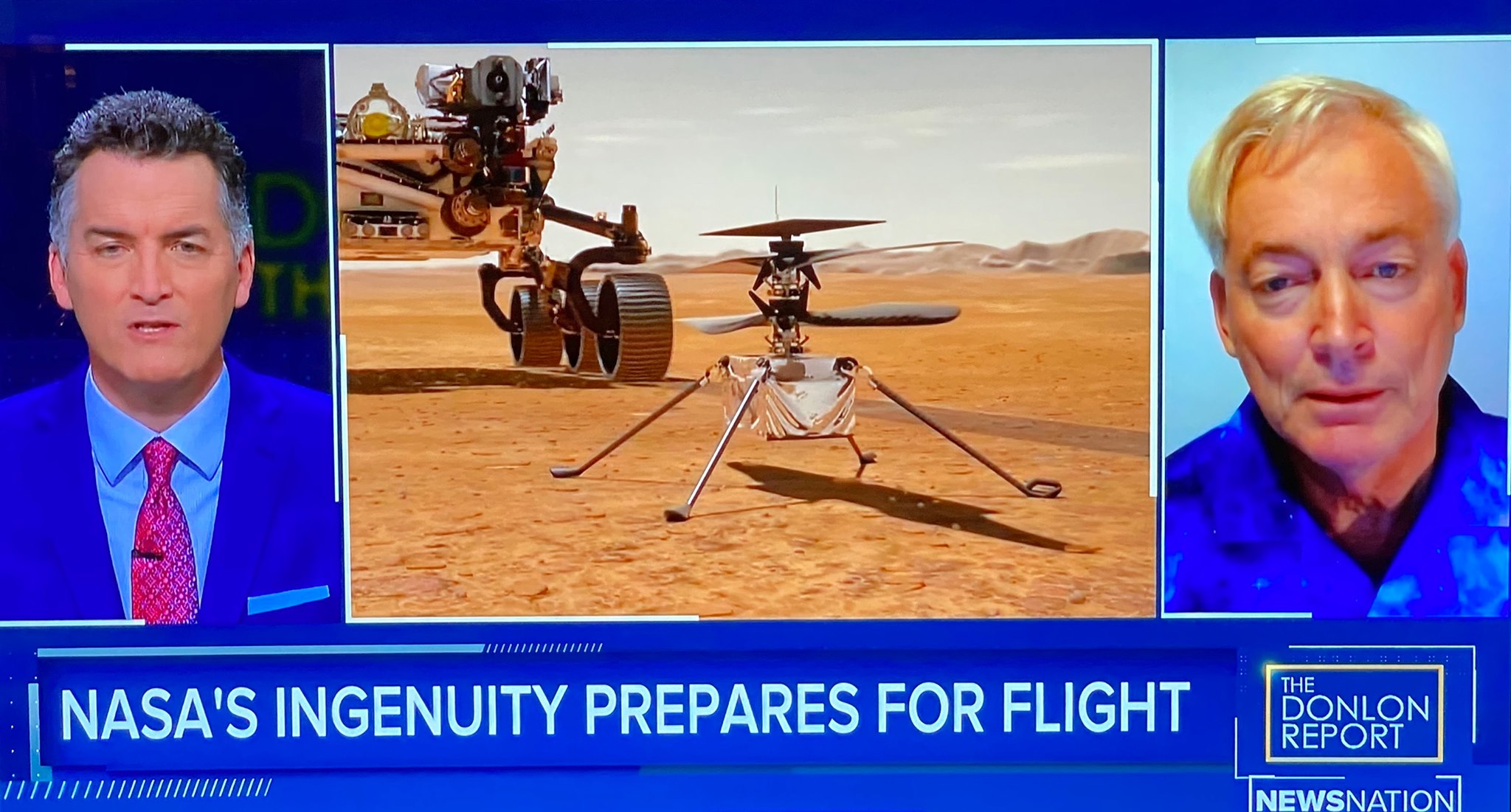
https://twitter.com/TheDonlonReport/status/1377282034775769092
The solar powered Ingenuity helicopter is a technology demonstration experiment aimed at attempting the first flight on Mars.
The four legged Ingenuity has a mass of about 4.0 pounds (1.8 kilograms) and stands 1.6 feet or 19 inches (0.49 meters) high.
Meanwhile Perseverance has been busy gathering high resolution imagery of her breathtaking surroundings nearby and off into the distance to the stunning walls of Jezero Crater some 2 miles (3 km) away.

Check out the spectacular Jezero Crater scenery in my new mosaics of images taken by the robots mast mounted zoomable Mastcam-Z camera on Sols 36 and 38 – see below.

Watch our live and complete ‘Stay Curious’ with live Perseverance landing commentary Feb 18, 2021 as well as March 22 mission update and earlier programs on Mars Mania on Feb 12.
https://www.facebook.com/175507880819/videos/2694057200904814
https://www.facebook.com/175507880819/videos/752176242375043
https://www.facebook.com/175507880819/videos/3246699658764085
Watch Ken’s continuing reports about Mars 2020 Perseverance and Curiosity rovers, Artemis and NASA missions, SpaceX, Starlink, Commercial Crew and Starliner and Crew Dragon and onsite for live reporting of upcoming and recent SpaceX and ULA launches including Crew 1 & 2, Demo-2, ISS, X-37B, Solar Orbiter, NRO spysats and national security missions and more at the Kennedy Space Center and Cape Canaveral Space Force Station.
Stay tuned here for Ken’s continuing Earth and Planetary science and human spaceflight news: www.kenkremer.com –www.spaceupclose.com – twitter @ken_kremer – email: ken at kenkremer.com
Dr. Kremer is a research scientist and journalist based in the KSC area, active in outreach and interviewed regularly on TV and radio about space topics.
………….
Ken’s photos are for sale and he is available for lectures and outreach events
Ken has created hundreds of widely published Mars rover mosaics and lectures also about NASA’s Mars rovers
Please consider supporting Ken’s work by donating at Patreon:
https://www.patreon.com/kenkremer
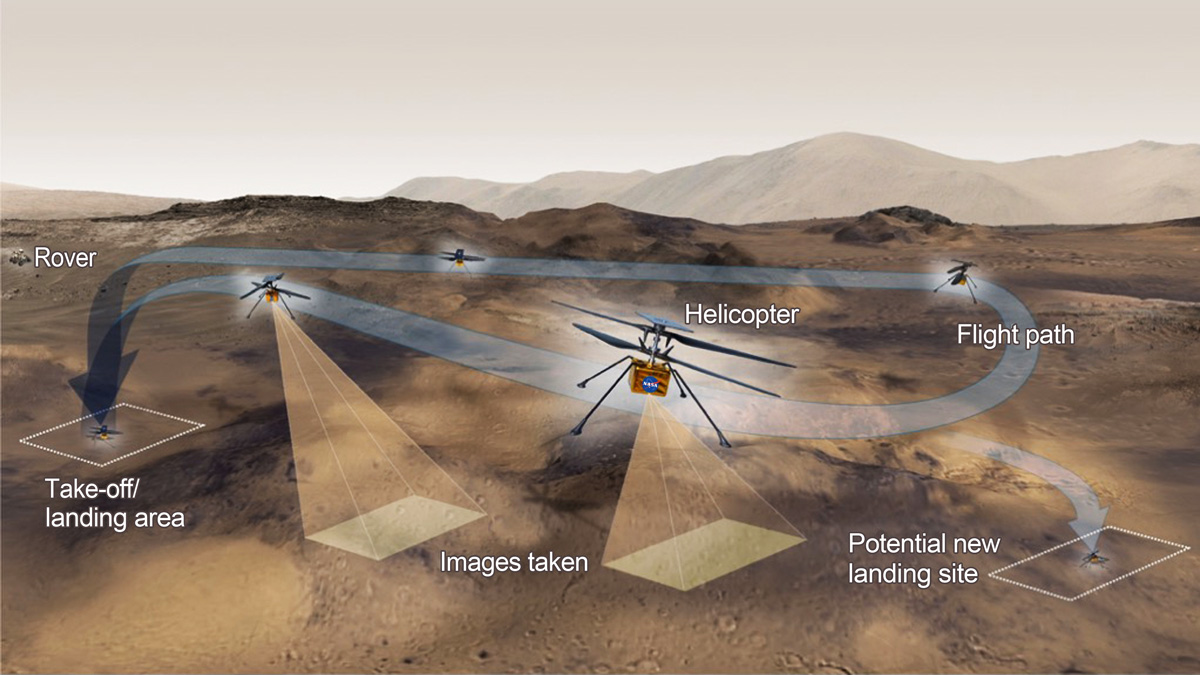
x



